Japan’s Opposition Must Learn To Talk About The Economy
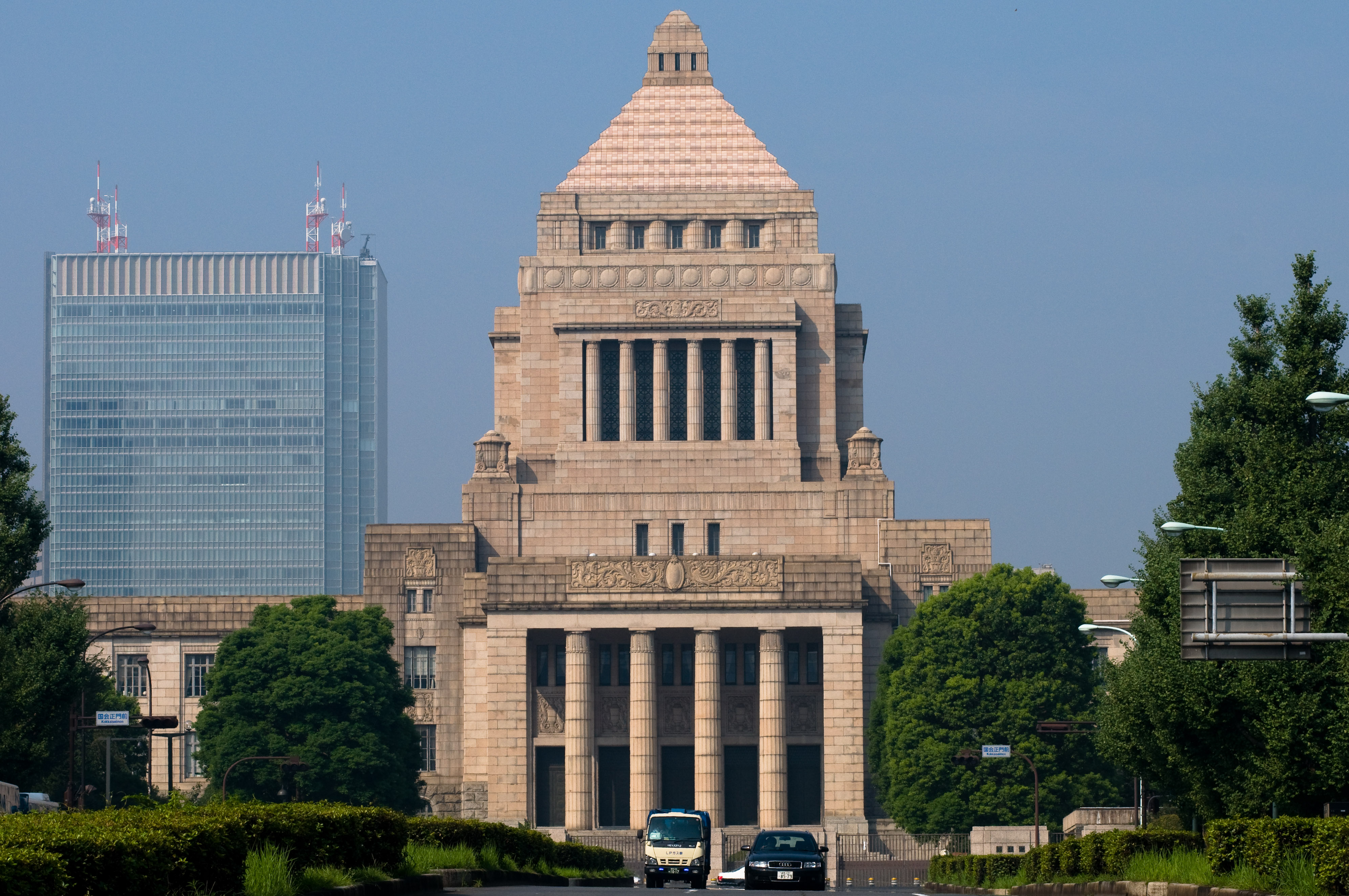 Changes to Japan's constitution would require a two-thirds majority in both chambers of the Diet before a public referendum. (https://flic.kr/p/5mnpiS)
Changes to Japan's constitution would require a two-thirds majority in both chambers of the Diet before a public referendum. (https://flic.kr/p/5mnpiS)
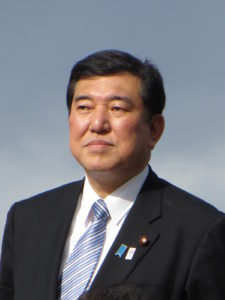
It was supposed to be the moment of reckoning. Japanese Prime Minister Shinzō Abe’s six years in office have been, according to his critics, characterized by an over-centralization of power and a steady stream of corruption, a narrative that resonates with much of the public. In this September’s leadership review within his Liberal Democratic Party (LDP), Abe was supposed to get his comeuppance. He has had a tough ride since 2015, when he last won his leadership election unopposed. Since then, scandals erupted over both his personal conduct and alleged bureaucratic cover-ups, costing the party control over the Tokyo Assembly. Furthermore, his popularity has been underwater more often than not, and his own supporters cite the lack of any viable alternatives more so than any enthusiasm for Abe.
And yet, Abe’s re-election to the party leadership is shaping up to be a cake-walk. One potential challenger decided not to run, while another is struggling to collect enough signatures for her nomination. Only former Defence Minister Shigeru Ishiba, the man whom Abe beat in 2012 when he was first chosen party leader, will end up running against him. Surveys of MPs and supporters suggest Abe has a formidable advantage. Ishiba has stated that he is putting forth his candidacy to show that the LDP is still a place for open debate, that the party is more than simply several hundred sycophants pledging fealty to their leader. Yet this election might end up proving the opposite. The LDP, whose history has been defined by continuous, brutal factional infighting, seems to have been pacified.
Meanwhile, on the other side of the aisle, the prevailing narrative is of an opposition perennially in disarray, fragmented between multiple parties, and too unsure of itself to unseat Abe. Together, these two narratives seem to indicate that Abe will maintain absolute, unaccountable domination over Japanese politics for the foreseeable future. However, while the opposition is in no position to win a general election if one were held right now, a simple shift in messaging might do wonders. Instead of getting caught up in ideologically-coded conflicts, the opposition must bring forward concrete pocketbook proposals.
Ideology in Japan
Political scientists speak of “dealignment,” a process, sparked throughout the democratic world in the 1980s, in which voters began to shed their intense partisan loyalties and instead began “shopping” among various parties during each election. As a result, parties were less able to count on a loyal group of voters to support them election after election and began appealing to a new “middle”. Consequently, ideological labels have become more fluid, and the question of where parties stand on an absolute left-right spectrum has become more of an academic question.
For example, Canada’s Liberal Party might be described as centrist, given its relative position to the two other main parties. It might also be considered centre-left given its historical achievements; meanwhile, many NDP supporters will tell you that everyone but them is centre-right. However, what was actually relevant to most 2015 voters, who were but casual observers, was that Justin Trudeau’s marquee policies (raising the carbon tax, accepting thousands of Syrian refugees, bolstering infrastructure spending, taxing the rich) signaled a progressive shift from the incumbent Harper government, even as Trudeau promised continuity in most areas.
This is not the case with Japan, where dealignment has very much occurred, yet commentators continue obsessing over finding the proper label for every politician and party. The Constitutional Democratic Party (CDP), the current official opposition, is “liberal”, while other recent opposition parties, like the Party of Hope and the Democratic Party for the People, are “conservative”, like the LDP. However, those opposition leaders wishing to distinguish themselves from the LDP use different labels, including “reform conservative” or “tolerant conservative” or even “right-liberal”.
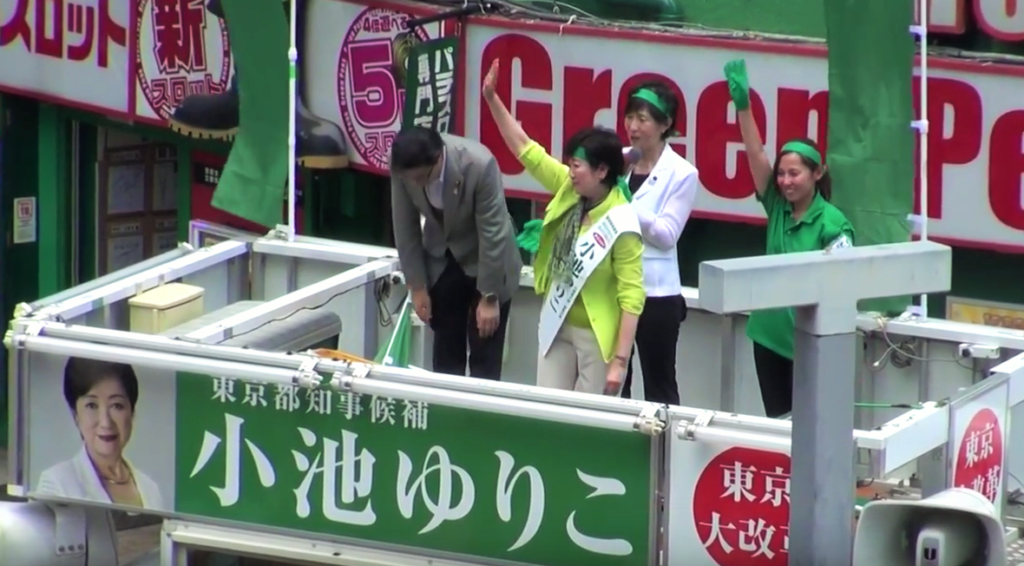
In conjunction with this obsession over labels is an obsession over very ideologically-charged topics, such as whether the Constitution’s Article 9 (forbidding the country from engaging in war) should be revised, whether aiding allies under attack counts as “defence” (and therefore permitted), or whether the Prime Minister should visit the Yasukuni Shrine, where all of the country’s war dead are honoured, including (regrettably) its war criminals. Other topics recently discussed by the chattering class include whether nuclear power should be maintained, whether resident non-citizens should be able to vote, and whether the Senate should be abolished.
These issues divide the “liberals” from the “conservatives”, and thus justify the liberal opposition parties’ existence, but they do not at all drive day-to-day political conflict, the result being that the opposition is reduced to theatrically opposing the Cabinet’s every move and stoking outrage (usually in vain) over the Prime Minister’s most recent scandals. Furthermore, these broad questions of ideology do not engage the vast majority of voters. Voter turnout has fallen and has hovered dangerously close to 50% for the last several elections; 40% of voters consistently describe themselves as having no partisan affiliation while another 10% simply back whomever is in power. While it is often said that most Japanese voters are conservative (and therefore unlikely to vote for a liberal party), what they really are is indifferent. They are not proactively in favour of policy positions and do not see how politics affects their daily lives, although they are willing to vote for a party that seems interesting, credible, and responsible.
It’s the economy, stupid
What would engage voters more are so-called “pocketbook issues” – as Bill Clinton’s campaign famously put it, “it’s the economy, stupid”. And what makes Japan’s partisan status quo extremely bizarre is that the economy, while better than in the past decade, still contains many problems that the opposition can propose to improve.
Many Japanese citizens must balance multiple part-time jobs to get by and face uncertain long-term career prospects, to the point that they delay starting a family and moving out of their parents’ home. Students face increasing school-debt burdens. One in every five workers works more than 49 hours a week, and a similar proportion racks up over 80 hours of overtime per month. There is a gaping gender gap in wages, and additionally many women can only find part-time employment (the fear among women that leaving work to give birth will torpedo their careers, is cited as a driver of the country’s low marriage and birth rates.) Corporations have largely sat on the profits that LDP’s policies have yielded them, while wage growth has been slow. There are not enough childcare providers, and not enough are willing to take on these roles at current wages. These everyday economic issues suggest that there should be plenty of ways that, through concrete policy proposals, the opposition can improve people’s daily lives.
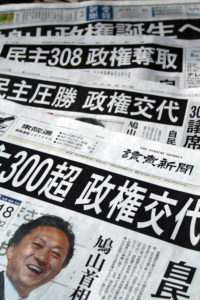
Yet, the opposition offers only a broad-strokes criticism of LDP economic policy (as favouring the stock-owning rich over the middle class) and no concrete alternatives. Instead, they have settled on abolishing nuclear power as their first (and, at the moment, only) signature policy. In a recent gubernatorial election, they argued that the issue of abolishing nuclear power is relevant to all voters, as a nuclear meltdown (like the one that befell Fukushima) might force people to evacuate their hometowns. The opposition lost.
“People’s Life First”
There was a brief period during last decade when the Democratic Party – the forerunner to today’s opposition parties – felt comfortable speaking about the economy. After a 2005 election fought over the arcane matter of neoliberal economic reform, the Democrats in 2006, under a new leader, ran a Senate campaign under the banner of “the people’s well-being comes first” – apparently a bold idea at the time. The next general election, in 2009, saw the Democrats propose a universal child benefit, as well as universal tuition-free high school. They won both. [1]
To be sure, it is important not to overstate the extent to which these campaigns turned on these policies. At this point, the ruling LDP had no clear leadership or direction, and by 2009 had presided over the financial crisis. And the Democratic leader who spearheaded this new direction, Ichirō Ozawa, bore considerable responsibility for the party’s eventual failure in government. His personal corruption scandals accounted for much of the steady stream of bad press that engulfed the party, while his decision to break off from the party and to take his dozens of disciples with him conclusively brought down the Democratic government. (He took his slogan with him, naming his new party the “People’s Life First” party. However, with the Democrats’ failure to enact their manifesto still fresh in voters’ minds, it performed poorly.) [2]
’Nomics
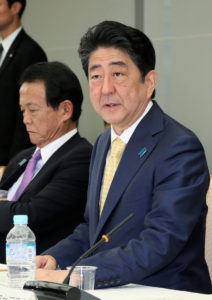
The LDP returned to power in 2012 under leader Shinzō Abe. While Abe is a hardline conservative, who had advanced a staunchly nationalist program during his first brief stint in power, he ran the 2012 campaign with a focus on his “Abenomics” program of economic recovery. [3] Abenomics and its “three arrows” (printing money, spending money, and enacting then-unspecified reforms) were catchy and simple to understand for voters. While, again, many other factors were at play, Abenomics handed the LDP crushing majorities in 2012 and 2014 (the latter of which was even dubbed the “Abenomics election”).
Conversely, its 2012 debacle left the Democratic Party utterly paralyzed, trying simply to tread water and not disappear entirely. Other parties, like the Restoration Party in 2012 and the Party of Hope in 2017, tried to fill the vacuum left by the Democrats by proposing a new economic direction. However, the short and sudden nature of Japanese elections meant they had very little time to flesh their programmes out beyond general statements of principle.
For example, the Party of Hope ran last year’s election campaign with a platform of “Yuronomics” (named after party leader Yuriko Koike) – billed as a platform of bread-and-butter issues to counter the more macroeconomic-focused Abenomics. Yet, the “platform” ended up being only a list of very broad aims, many of which were blatantly and comically unrealistic (including abolishing crowded trains and seasonal allergies). This proved to be a significant factor of why the party lost credibility and fell to third place.
A roadmap for the future
The elections of Justin Trudeau in Canada and Jacinda Ardern in New Zealand share a common narrative – the fact that they were both able to throw out incumbent conservative governments, not because the latter had mismanaged the economy or created social crisis, but ironically because they had actually done their jobs of managing the economy and government finances relatively well. It was precisely because these governments had completed what they had set out to do that electorates were receptive when a young, “relentlessly positive” progressive leader told them with a smile that “better is always possible”.
Similarly, when the LDP loses power, it will not be because they will have catastrophically mismanaged everything. For all of the flaws and anxieties described earlier, the economy is doing better than in the two preceding decades. Indicators such as growth and wages are trending upwards, if tentatively; most voters are content, if not thrilled. Instead, a change in government will arrive once the LDP comes to seem uninspired and stale, while the opposition offers a better alternative. In other words, a successful opposition would do precisely the opposite of what it is currently doing – instead of trying to whip up popular outrage over scandal, it would devote all its energy to fleshing out better policies.
To its credit, the CDP, in keeping with its ethos of grassroots politics, have been hosting “policy cafés” throughout the country, where participants have been highlighting precisely these sorts of economic issues. Given that the party only faces its next electoral test in next spring’s local elections, a comprehensive economic program might simply still be in incubation.
One can only hope so. Clinton used the term “stupid” playfully, but a Japanese opposition that continues to ignore the economy would genuinely deserve the epithet.
Edited by Steven Polyakov
–-
[1] Schoppa L. (2011) Introduction: From the 1955 System to the ‘2000 System’. In: Schoppa L. (ed) The Evolution of Japan’s Party System: Politics and Policy in an Era of Institutional Change. University of Toronto Press
[2] Pekkanen R., Reed S.R. (2013) Japanese Politics Between the 2009 and 2012 Elections. In: Pekkanen R., Reed S.R., Scheiner E. (eds) Japan Decides 2012. Palgrave Macmillan, London
[3] Endo M., Pekkanen R., Reed S.R. (2013) The LDP’s Path Back to Power. In: Pekkanen R., Reed S.R., Scheiner E. (eds) Japan Decides 2012. Palgrave Macmillan, London
